Proso millet
Learn about proso millet an annual warm season grass.
History and Distribution
Proso millet (Panicum miliaceum L.) is an annual grass, growing from seed each year. Its origin goes back in history at least as far as 2000 B.C. when it is reported to have been grown in the central regions of Europe. This plant is especially well suited to dry climates such as central Russia, the Middle East, northern India, Africa, Manchuria, and the Great Plains area of North America.
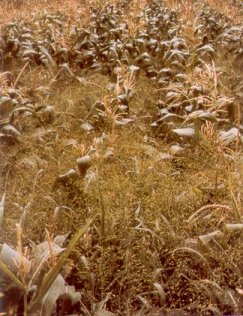
Figure 1. Proso millet offers a serious threat to corn production. The lack of adequate chemical control measures is leading to significant corn grain losses.
Proso millet was first introduced to Canada in the 17th century, and was used in a limited way as a forage crop in the early 1900's. It apparently did not produce sufficiently high yields of either forage or grain to compete with the established cereals and forages of that time so it gradually disappeared.
Within recent years a demand for birdseed renewed interest in proso millet. Some Ontario farmers are growing proso millet for this market. The varieties grown are normally those with white, tan, or reddish colored seeds and are similar to crops used in the early 1900's.
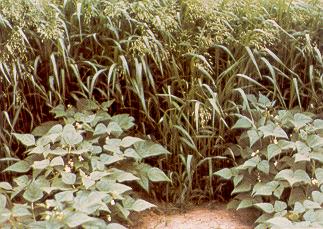
Figure 2. Proso millet can dominate white bean production fields if given an opportunity. In the seedling stage, proso millet may be mistaken for volunteer corn.
By the early 1970's, scattered reports were being received of a weedy grass escaping herbicide treatments in corn and bean fields. This turned out to be proso millet.
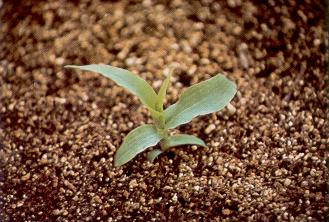
Figure 3. At the seedling stage, proso millet can be mistaken for a volunteer corn seedling.
Positive identification can be made by carefully removing the plant from the soil and observing the large seed which remains attached to the roots until maturity.
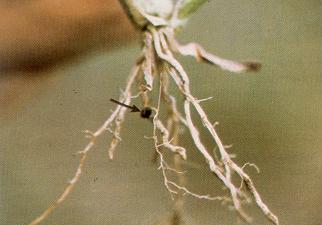
Figure 4. The best identification feature of proso millet is the long-lasting seed husk attached to the roots.
By 1978, numerous reports of proso millet had been received from locations across central and western Ontario. In the summer of 1980, weed survey crews reported over 125 locations of this weed. By 1986, this had increased to about 190 sites.
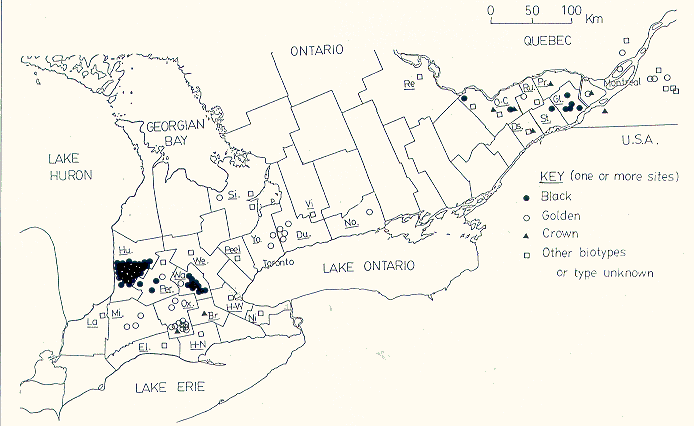
Figure 5. Distribution of proso millet in Southern Ontario (Source : OMAFRA Weed Alert Program, 1986, plus follow-up identifications Bough & Cavers, U.W.O.).
An additional intensive field by field survey, last conducted in 1985 by McCanny, Bough and Cavers (University of Western Ontario) of Hullet Township, Huron County and North Norwich Township, Oxford County, showed an additional 47 sites in Hullet and 23 sites in North Norwich. Thus, the Weed Survey figures must be considered a conservative estimate.
Description
Proso millet (Panicum miliaceum L.), wild proso millet, birdseed millet, broom corn millet, common millet, Hershey millet, hog millet, panic millet) is a member of the tribe Paniceae of the Panicoideae subfamily of grasses. It is closely to the following common Ontario weeds : witch grass (Panicum capillare L.), fall panicum (Panicum dichotomiflorum (L.) Michx.), barnyard grass (Echinochloa crusgalli (L.) Beauv. ) and crab grass (Digitaria spp.). This tribe of grasses originated in the tropics and most of the crops belonging to this tribe are grown in the hot, semi-arid regions of the world.
Proso millet is an annual warm season grass. The seedlings grow rapidly into upright plants (Figure 2) which may tiller at low densities. Leaf blades are more or less hairy on both surfaces and the edges. They are 1 to 2 cm wide and up to 30 cm long. Leaf sheaths are densely hairy and have overlapping margins.
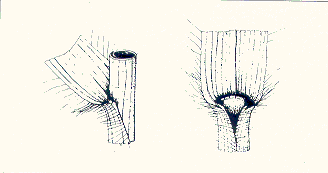
Figure 6. Distinguishing features of the leaf base of proso millet.
The ligule (projection from the inner surface of the leaf sheath at the point where the leaf blade meets the stem) consists of a line of dense hairs. There are no auricles. The much branched panicle, 15 to 30 cm long (at the top of the stem) is compact in some populations and loose in others. The spikelets are borne singly at the ends of the branches. Each is about 5 mm long and consists of a fertile floret and a sterile floret enclosed between two pieces of chaff (the outer glumes).
The so-called "seed" or "grain" is the somewhat egg-shaped fertile floret in which the hull (lemma and palea) is hard and shiny and firmly encloses the seed when it is shed. The grains are about 3 mm long by 2 mm wide and their color varies from brownish black through olive brown, orange-red, golden and light cream.
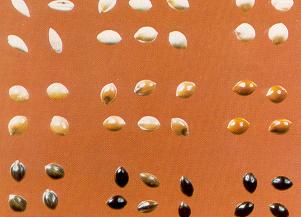
Figure 7. The colour of proso millet seeds varies from light to very dark.
Examination of plants collected from nearly all reported sites in Ontario has revealed that at least 6 distinct forms or biotypes exist as weeds. These are most easily distinguished by seed color, but they are distinct in other characteristics too, such as the shape of the inflorescence ,shattering or non-shattering from the head, amount of tillering, time of flowering, height and ability of seeds to form a long-term viable seed bank (for a full description see Bough, Colosi & Cavers, 1986 Can. J. Bot. 64 : 1188-1198). Most of the biotypes resemble varieties that have been grown as crops, but a large percentage of the infestations are of the dark-brown or black-seeded type of proso millet which seems to have always been a weed (sometimes called Panicum spontaneum or P miliaceum var. ruderale in European literature). This appears to be a very aggressive biotype; its seeds shatter when they ripen and most fresh seeds are dormant. Up to 85% of these seeds can remain viable for one winter in the soil, and a few are still viable after four years. It is very tolerant of atrazine and most annual grass herbicides. This black seeded proso millet is most common in Huron, Waterloo and Glengarry counties, but is also present in Perth, Stormont and Ottawa-Carleton (Figure 5).
Two other biotypes are widespread in Ontario. One has grey-green seeds with cream stripes and resembles the old named crop variety "crown". This biotype has a diffuse panicle, but retains most of its seeds on the inflorescence after they are ripe. Survival of seeds in the soil is very variable, but can be up to 40%. Populations of this biotype are present in Oxford, Brant, Dundas, Prescott and Ottawa-Carleton counties. The widespread infestations in Manitoba, where it is present in large acreages of corn, are almost exclusively of this biotype. It is also present in Quebec. The third weedy biotype present at many sites in Ontario has golden seeds. There are a number of golden seeded crop varieties currently grown. The variability noted amongst different weedy populations may indicate that these populations arose from several varieties. All plants have compact inflorescences and retain ripe seeds on the panicle. Survival overwinter is variable between populations, from almost nil to 30 or 40%. Some populations have additional weedy characteristics, such as greater resistance to herbicides, which make them a potentially serious weed threat. The golden biotype is present in Middlesex, Oxford, Waterloo, Perth, York, Durham, Simcoe, Northumberland and Russell counties (Figure 5). It is also present in Quebec close to the Ontario border.
There are a few populations of plants with cream, and orange-red seeds in Ontario ,but these do not appear to be spreading. A biotype with dark red-chestnut colored seeds and strong initial seed dormancy is present in Quebec close to the border with Ontario, but has yet to make its appearance here.
The distribution of all these biotypes is shown in Figure 5. Two common weeds look similar to proso millet. Fall panicum has a similar panicle but can be distinguished by its nearly smooth stems and leaves, its tendency to be more spreading with "Z-shaped" stems, and its smaller seeds. Witch grass is hairy and upright like proso millet, but its panicle is much more delicate looking and its seeds are less than half the size of those of proso millet.
Growth
Proso millet develops from a relatively large seed. The seed hulls are slow to decay and may remain attached to the primary roots even after the plant is mature. Emergence normally begins about the third week of May, which is about the same time that yellow foxtail is first observed. Germination and emergence of proso millet continue throughout the season. Plants may emerge after cereal crops have been harvested and these late-emerging plants may still be capable of producing seeds before fall frosts arrive. New plants will also emerge in crops like white beans, corn, and soybeans as the crop matures and the crop canopy is reduced. These plants will not normally produce viable seeds. Seed germination tends to be more sporadic with the dark-seeded proso millet than with the forms having lighter colored seeds.
Although many seeds germinate at or near the soil surface, the average germination depth is about 2.5 cm. Seedlings can emerge from depths of 7.5 to 13.5 cm depending on soil type and tilth.
Without competition from the crop early in the season, growth is extremely fast. In corn, this weed will reach a height of 150 cm and it normally reaches a height of about 100 cm in white beans. Good stands of barley will severely restrict the growth and numbers of proso millet and for those weeds that do survive, plant height will be held to about 25 cm.
In crops such as cereals and corn, the weed produces seed heads from about mid-July, and mature seeds by early August. Later-planted crops like soybeans and white beans will have mature proso millet seeds by mid-to-late August.
Seeds from the dark-seeded proso millet shatter readily when they are mature and since the seeds mature at different stages on the same plant, seed dispersal continues through August. September, and part of October. Biotypes with lighter-colored seeds will also shed a few seeds as they mature but there is strong tendency to retain the seeds on the plant. The stems and panicle branches are still green when the seeds ripen.
Moderate infestations of proso millet will produce 2000 to 3000 seeds per square metre. Heavy infestations can produce at least 40,000 to 45,000 seeds per square metre. The seeds can be spread quite easily by combines, forage harvesters and other farm equipment. Small patches of black proso millet in one year can turn into full field infestations in two or more years.
Weed Control
See OMAFRA Publication 75 "Guide to Weed Control for chemical control product information.
It has been noted previously that seeds of some populations of the non-black biotypes have poor overwinter survival. In all our experiments none of these seeds have lasted for two winters in the soil (unlike the black seeds which can last at least 4 years). Provided no new seeds enter the soil, it should be possible to eliminate the non-black biotypes within 2 years. Most of these populations retain their seeds on the inflorescence for a time after ripening. Small patches of plants could easily be pulled by hand to prevent seeds entering the seed bank in the soil.
Another excellent way to avoid these problems with proso millet is to use sanitary crop production practices. By eliminating infestations early, using clean weed-free seed, and by cleaning farm equipment of weed seeds before moving between fields some of these problems can be avoided. A lesson can be learned from the experiences of growers in Wisconsin and Minnesota in the U.S.A. Proso millet was first noticed there in the early 1970's. By 1980 there were 400,000 hectares of prime land infested with proso millet. The spread was caused principally by weed seeds carried between farms by sweet corn cannery combines. The main fact to remember is that proso millet has spread rapidly, and contaminates large acreages of crop land in Wisconsin, Minnesota, and neighboring states and is becoming a major problem in Ontario as well.